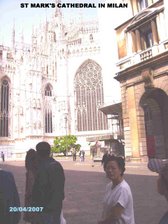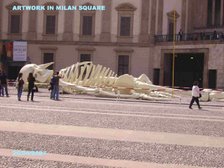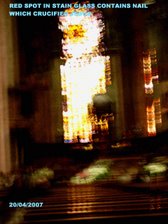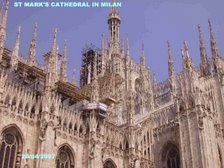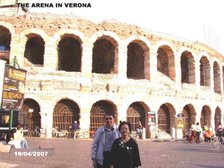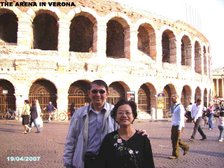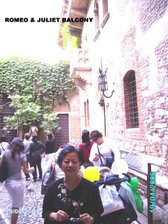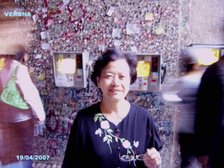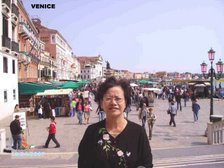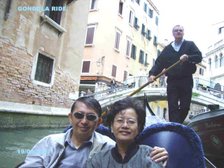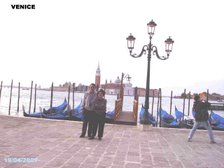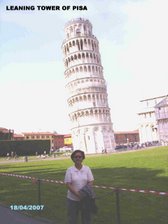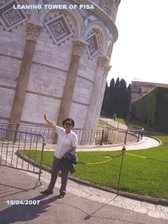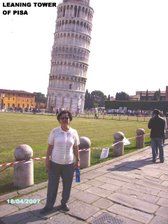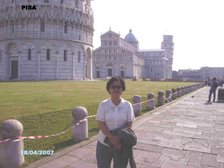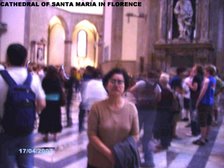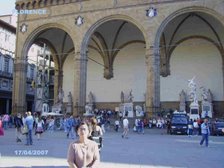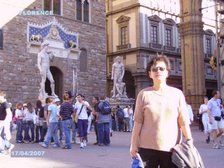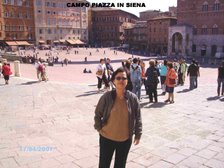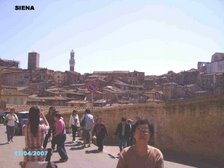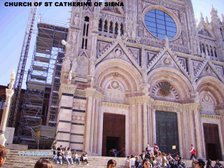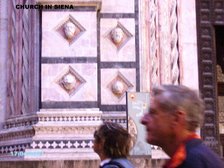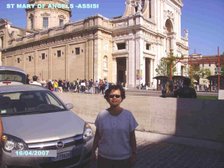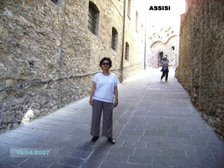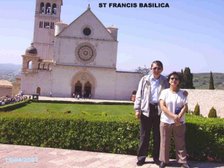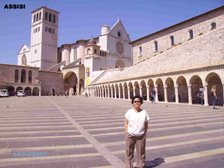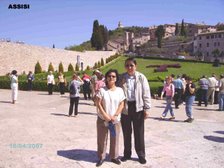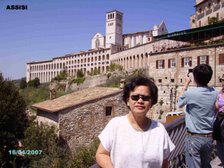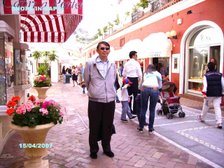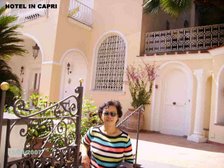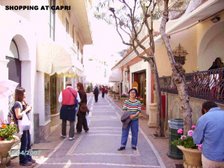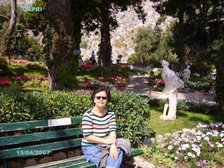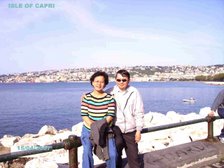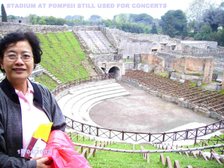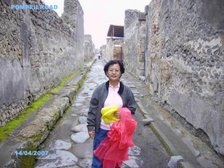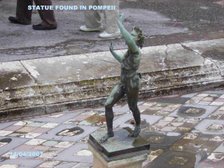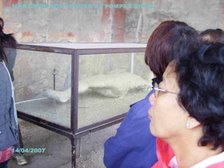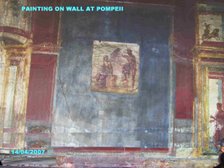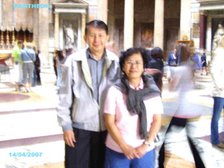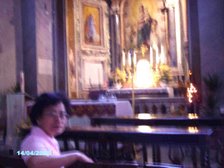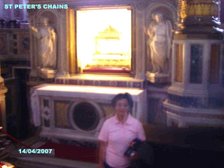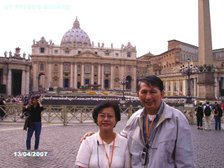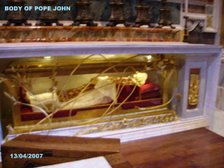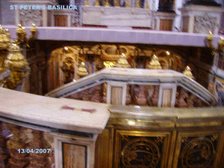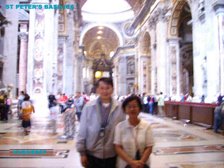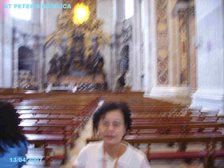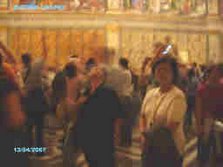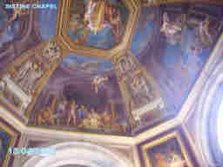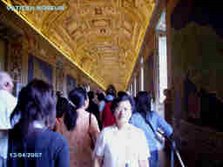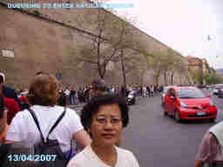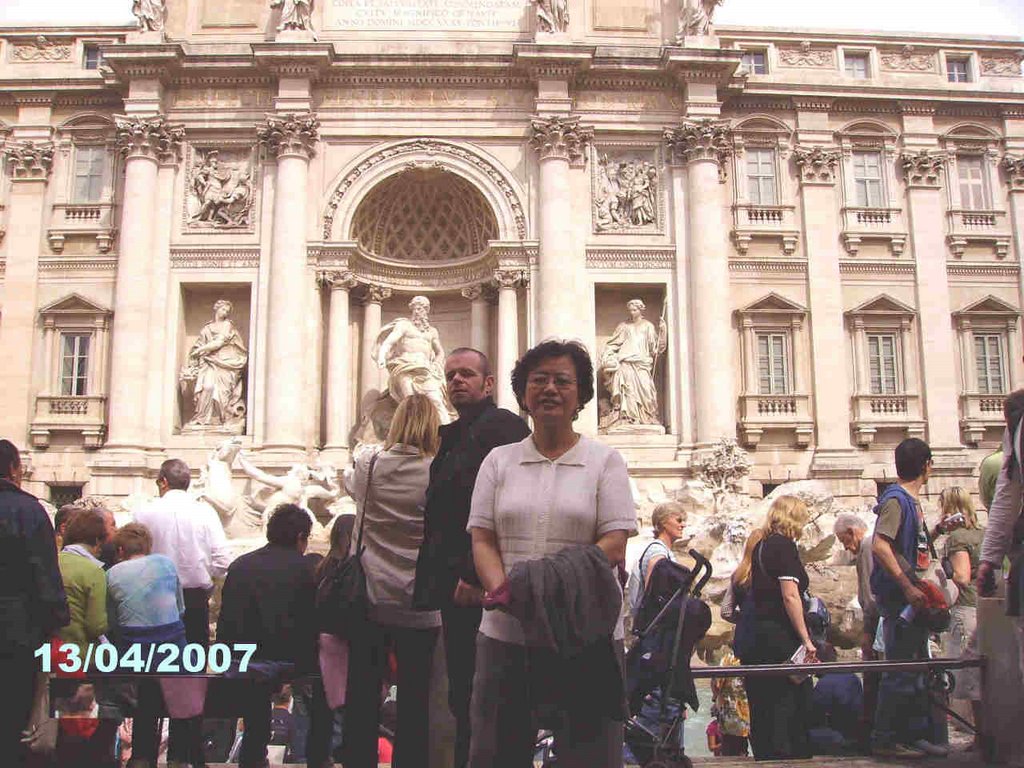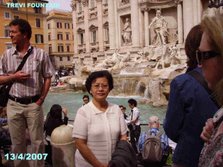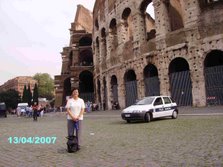OUR TRIP TO ITALY APRIL 2007 - VERONA
Next we travelled to the ancient town of Verona which boast the Famous scene of Romeo & Juliet on the balcony and also a small complete Roman Arena.
"There is no world without Verona walls,But purgatory, torture, hell itself.Hence-banished is banish'd from the world,And world's exile is death."
—William Shakespeare, Romeo and Juliet, Act III, Scene III
Verona is a city and provincial capital in Veneto, Northern Italy.
Verona, or Veronia, was a city of the Euganei,
who were obliged to cede it to the Cenomani (550 BC).
The city derived importance from being at the intersection of many roads.
Because of the value and importance of its many historical buildings,
Verona has been named a UNESCO world heritage site.
San Zeno Basilica, like many other Veronese churches,
is built with alternating layers of white stone and bricks.
Verona is famous for its Roman amphitheatre, the Arena,
completed around 30 AD, which is the third largest in Italy,
after Rome's Colosseum and the arena at Capua.
It measures 139 meters long and 110 meters wide, and
could seat some 25,000 spectators in its 44 tiers of marble seats.
The interior is very impressive and is virtually intact, and
has remained in use even today for public events, fairs, theatre
and open-aired opera during warm, Summer nights.
There is also a variety of other Roman monuments to be found in the town,
such as the Roman theatre.
The Arco dei Gavi (Gavi Arch), dedicated to the important Roman family
of the Gavii, was built in the 1st century AD, and is famous for having
the name of the builder (architect Lucius Vitruvius Cordone) engraved on it,
a really rare case in the architecture of the epoque.
It originally it straddled the main Roman road into the city,
now the Corso Cavour.
Nearby is the Porta dei Borsari, an archway is at
the end of Corso Porta Borsari. This is the façade of a
3rd century gate in the original Roman city walls.
The inscription is dated 245 AD and gives the city name
as Colonia Verona Augusta. The road passing through the gate
is the original Via Sacra of the Roman city.
Today, it is lined with several Renaissance palazzi.
Porta dei Leoni is the 1st century BC ruin of what was
once part of the Roman city gate. A substantial portion is still
standing as part of the wall of a medieval building. The street itself is
an open archaeological site, and the remains of the original Roman
street and gateway foundations can be seen a few feet below the present street level.
The Basilica of San Zeno Maggiore is considered one of the
great achievements of Romanesque architecture.
The present structure is the 3rd on this site,
built from 1123-1135, over the 4th century shrine to
Verona's patron saint, St. Zeno (died 380).
The splendid façade dominates the large square,
and is flanked with a beautiful 72 meter tall bell tower,
which is mentioned by Dante in Canto 18 of Purgatory in the Divine Comedy.
The weathered Veronese stone gives a warm golden glow and
the restrained lines of the pillars, columns, cornices and the gallery
with its double windows give the façade an air of harmonious elegance.
The lintels above the portal have carvings of the months of the year.
Each side of the doorway is embellished with 18 bas-relief panels of
biblical scenes, and the inner bronze door has panels have 48 primitive
but forceful Biblical scenes and depictions from the life of St Zeno.
The interior of the church is divided into a Lower Church,
occupying about 2/3 of the structure, and the Upper Church,
occupying the remainder. The walls are covered with
12th and 14th century frescos and the ceiling of the nave
is a magnificent example of a ship's keel ceiling.
The vaulted crypt contains the tomb of St. Zeno,
the first Bishop of Verona as well as the tombs of several other saints.
North of the church is a pleasant cloister.
The church also houses the tomb of King Pippin of Italy (777-810).
The small Romanesque Basilica of San Lorenzo is one of the finest and
most important in the city. Its dates from around 1177, but is built on
the site of a Paleochristian church, some fragments of which remain.
Santa Maria Antica is a huge Romanesque church was the parish church
of the Scaligeri clan. Founded in the 7th century, the interior is very beautiful.
The structure is of alternating bands of brick and stone.
The square belfry has Gothic mullioned windows, and
inset glass crosses in the roof admit light.
Only large enough to hold a couple dozen people at most for mass,
when the Scaligeri chose this to be their funerary chapel,
the only place for their massive tombs was outside.
The Duomo is also a notable Romanesque church.
Sant'Anastasia is a huge and lofty church built from 1290-1481
by the Dominicans to hold the massive congregations attracted by
their rousing fundamentalist sermons. The Gothic portal has faded
15th century frescoes and carved scenes from the life of St Peter Martyr,
but the façade is unfinished. Inside is one of the most outstanding examples of Gothic architecture in northern Italy. However, its proportions and various elements of the design are still decidedly Romanesque.
The famous balcony of Juliet at Villa Capelletti in Verona.
Verona is the setting of the story of Romeo and Juliet, made famous by
William Shakespeare. The short passageway leading to the balcony is
covered with slips of paper carrying their graffiti of love notes, and
a bronze statue of Juliet stands under the balcony,
one breast polished by those touching it for luck.


